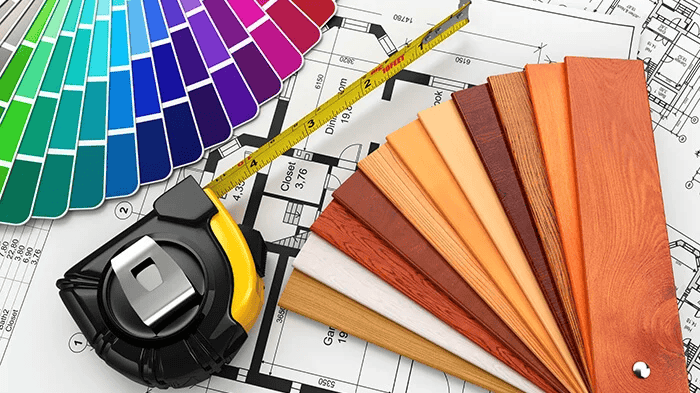Home improvements can be expensive and finding the savings to cover the cost isn’t always possible. So, what are the other options?
A home improvement loan can help cover the cost of any building work you do to your home. You can pay this off over a few months or years.
But before you start pricing up your dream kitchen, there are some points to consider. Here's what you should consider before applying for one.
What is a home improvement loan?
A home improvement loan is a personal loan that you can use for renovations or building work on your home.
Some people opt for a home improvement loan to increase the value of their home.
Others choose a home improvement loan to make more space or give their house a face lift. Sometimes this is a good alternative to selling.
How do home improvement loans work?
You usually apply for a home improvement loan through your bank, credit union, a private business or a lender.
If your application is approved, the money will go straight into your bank account.
Once you’ve taken out the loan, you’ll have to pay it back over time. Usually in monthly instalments. You’ll pay back the cost of the loan, plus the interest rate.
The amount of interest depends on:
How much you want to borrow
How quickly you choose to pay it back
Whether it’s a secured or unsecured home improvement loan.
What are secured and unsecured home improvement loans?
There are two main differences between secured and unsecured loans.
Secured loans are ‘secured’ against an asset like your home or your car. That way, if you can’t make the repayments, the lender can recover the money through the asset’s value.
Unsecured loans aren’t secured against anything. But if you can’t make repayments, you could receive a fine and damage your credit rating. The loan amount is usually smaller than a secured loan too.
Before you decide on a secured or unsecured home improvement loan, you should weigh up the pros and cons of each.
Why might a home improvement loan a good option for me?
If you have a good credit score, it’s worth considering a home improvement loan. You could benefit from lower interest rates and better deals on borrowing.
You can choose how long you want to take to pay the loan back. This is known as the loan term. Remember to budget for higher interest rates with this option.
Once your application is approved, the loan goes straight into your account. You’re not restricted to spend it on your initial project either, so you can get anything else you need with the cash.
Often you can get more through a loan than a credit card.
What should I consider when taking out a home improvement loan?
You should consider the cost of the building work before you take out the loan.
If it’s expensive, will you be able to budget for the cost of repayments plus interest? Check your outgoings before you take out the loan and see if it’s affordable.
Check your credit score before you apply for your loan. If your score is low you may be rejected from the loan in the first place.
What are the alternatives to a home improvement loan?
Savings
If your building work isn’t urgent you could try building up your savings and using that. That way you avoid the cost of interest.
Credit card
Some credit cards offer a 0% interest rate, which means you can pay off the cost without the added interest.
The interest-free period often only lasts for a certain time, so you’ll need to pay it off before the period ends. And often you can’t borrow as much on a credit card as you can with a loan.
Re-mortgage your house
Re-mortgaging means changing your current mortgage provider or changing your mortgage deal with your current lender.
When you re-mortgage, you borrow more money from your new or current lender. You can use the extra money for home improvements. Here’s an example of how this might work:
If your home is worth £200,000 and you’ve already paid £50,000, you have £150,000 left to pay.
If you take out an extra £170,000 with your new or current lender, you could use the extra £20,000 on home improvements.
Consider though, that you'll be paying your mortgage off over a longer term - along with interest rates. You could also be charged if you want to pay off the loan early.
Again, if you’re going down this route, make sure you can budget for repayments. You could risk losing your home otherwise.
Further mortgage advance
With a further mortgage advance, you borrow more money on top of your mortgage from your lender. A further advance will usually have a different interest rate from your mortgage.
You could benefit from lower interest rates than a loan, and you can borrow over a longer term.
But if you’re paying it off over a long time you could end up paying more in interest than a personal loan.
Make sure you weigh up your options carefully. A further advance may only be worth it if you can get competitive interest rates.
You could also lose your home if you don’t make your repayments back.
 cookie usage
cookie usage


